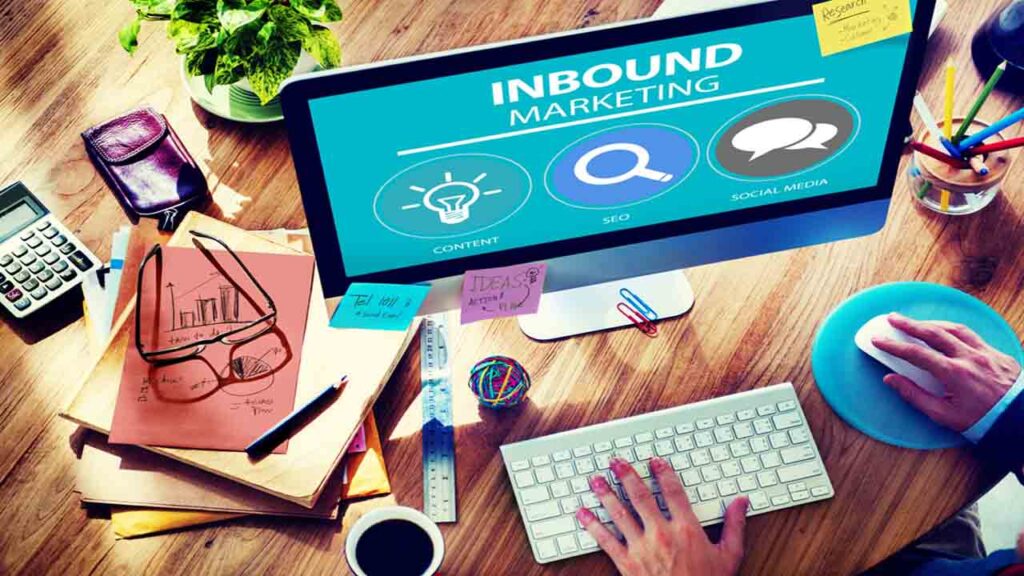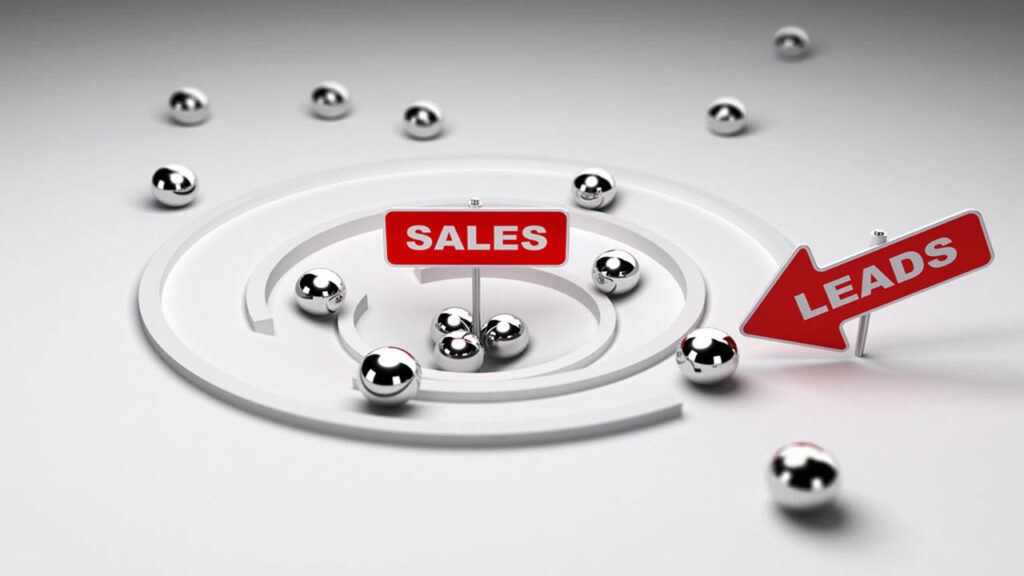Mastering B2B Lead Generation: Proven Strategies for Success
Brett Lewis
Lead Generation - October 8, 2024

Struggling with B2B lead generation? Discover key strategies to attract, nurture, and convert leads. Learn how to optimize your sales pipeline and drive business growth.
Key Takeaways
- B2B lead generation is vital for establishing a robust sales pipeline and involves identifying and nurturing qualified leads to boost conversions and revenue.
- Collaboration between sales and marketing teams enhances the efficiency of lead generation, ensuring a seamless approach for attracting and converting leads.
- Utilizing advanced technologies, including marketing automation and CRM systems, alongside proven strategies like content marketing and account-based marketing, can significantly improve lead generation success.
Understanding B2B Lead Generation

B2B lead generation is the cornerstone of any successful sales strategy. It involves identifying potential customers and capturing their interest through various marketing channels. This process is crucial for maintaining a healthy sales pipeline, ensuring conversions, and driving overall business growth. Effective B2B lead generation can significantly boost revenue and strengthen your market positioning.
At its core, the lead generation process captures valuable information about potential customers, enabling targeted sales approaches. Nurturing these leads helps businesses build strong relationships and offer tailored solutions. This not only increases sales opportunities but also enhances customer acquisition and retention.
What are B2B leads?
B2B leads consist of individuals or organizations. They have the potential to become customers for your products or services. These leads can include not just entire companies but also key contacts within those companies who are likely to benefit from what you offer. It’s important to note that generating leads alone is not sufficient; the leads must be qualified to ensure they come from promising sources.
In the realm of B2B, leads differ from B2C leads in that they involve other businesses rather than individual consumers. High-quality leads are those that show genuine interest in your offerings and have a high probability of converting into paying customers. These leads are critical for sustaining your business and driving long-term growth.
Types of B2B leads
Understanding the different types of B2B leads is essential for tailoring your lead generation strategies effectively. B2B leads can be categorized into four main types: Information Qualified Leads (IQLs), Marketing Qualified Leads (MQLs), Product Qualified Leads (PQLs), and Sales Qualified Leads (SQLs).
IQLs are leads that express an interest in learning more about your services but need further nurturing before they are ready to buy. MQLs, on the other hand, have been identified as likely to purchase based on certain criteria, though they may not be ready to buy immediately.
PQLs have shown a strong interest in your product after using it, making them prime candidates for sales. Finally, SQLs are actively engaged leads that have demonstrated intent to purchase and are prioritized in the sales process.
The Role of Sales and Marketing Teams in Lead Generation

For B2B lead generation to be truly effective, seamless collaboration between sales and marketing teams is essential. Aligning these teams ensures that both departments work toward common goals, thereby enhancing business growth. Effective communication between sales and marketing helps avoid misunderstandings and improves the quality of leads.
Sales teams focus on converting leads into customers through direct outreach and personalized interactions, while marketing teams are responsible for building awareness and generating qualified leads through various campaigns. This combined effort creates a robust lead nurturing system that drives higher conversion rates and fosters long-term customer relationships.
Sales teams
Sales teams play a pivotal role in the lead generation process through outbound marketing activities such as cold calling and emailing. These methods remain highly effective in reaching potential customers and initiating conversations that lead to sales. Tools like Saleshandy are often used by the sales team to enhance their cold outreach efforts with features like tracking, automated follow-ups, and accurate contact information.
Regular evaluation of key performance indicators (KPIs) is crucial for sales teams to assess the effectiveness of their lead generation strategies. Regular analysis of these metrics helps sales teams refine their approaches, target the right prospects, and maximize conversion rates.
Marketing teams
Marketing teams are tasked with generating awareness and attracting potential leads through various content marketing and social media strategies. Collaborating with industry influencers and creating engaging content on platforms like LinkedIn can accelerate lead generation efforts. Establishing a positive reputation on forums like Reddit and participating in discussions also helps build authority and trustworthiness.
Webinars are another powerful tool used by marketing teams to engage customers, educate them, and build trust. These events provide an opportunity to discuss pain points, showcase solutions, and increase brand awareness, ultimately driving more high-quality leads into the sales funnel.
Essential B2B Lead Generation Strategies

When it comes to B2B lead generation, there’s no one-size-fits-all solution. However, employing proven strategies can significantly enhance your lead generation efforts. The key is to prioritize the needs of your prospects and tailor your approaches accordingly. This section will explore essential strategies such as content marketing, account-based marketing (ABM), and search engine optimization (SEO).
These strategies help attract and engage high-quality leads, moving them through the sales funnel and converting them into loyal customers. Each strategy has its unique advantages and applications, making it important to understand how to effectively implement them in your lead generation campaigns.
Content marketing
Content marketing is a cornerstone of B2B lead generation, involving the creation of valuable content to attract and engage potential leads. Engaging content is delivered through various formats. These include:
- live events
- podcasts
- blog posts
- infographics
- webinars
- eBooks
- videos
Evergreen content, which continues to generate traffic over time, is particularly effective in maintaining a steady flow of leads.
Optimizing content for relevant search terms ensures that it reaches the intended target audience. B2B buyers typically encounter multiple pieces of content during their decision-making process, making it crucial to provide detailed answers to their questions and build credibility through case studies.
How well is your current marketing is performing? Find out with our FREE online self-assessment calculator. Click Here to get started. It only takes a few minutes, and the results are instantaneous.
Account-based marketing (ABM)
Account-based marketing (ABM) is a highly targeted approach that focuses on managing key accounts with personalized attention. This strategy is particularly effective when targeting high-value clients or complex products in competitive markets. Tailoring marketing efforts to specific accounts enhances engagement and builds stronger relationships with potential customers.
Tools like Customer Data Platforms (CDPs) and display ads on LinkedIn can be used to create personalized email lists and target specific leads based on company size, job role, and other criteria. ABM not only helps in generating high-quality leads but also in promoting brand awareness and engaging users with relevant content.
Search engine optimization (SEO)
Search engine optimization (SEO) is crucial for improving online visibility and attracting organic leads. Effective SEO techniques include targeting long-tail keywords, which drive sales-ready traffic with minimal effort, and implementing top-notch SEO practices to outrank competitors. Link building is another important aspect, as it helps in acquiring quality backlinks that boost search rankings.
Tools like SEMrush and Ahrefs assist in keyword research and competitor analysis, enabling businesses to refine their SEO strategies. Monitoring keyword rankings and content performance can provide valuable insights into the effectiveness of SEO efforts and help in making data-driven decisions for continuous improvement.
Leveraging Technology for B2B Lead Generation

In the digital age, leveraging technology is indispensable for enhancing B2B lead generation efforts. Automation, AI tools, and advanced analytics platforms play a critical role in streamlining sales and marketing activities. These technologies significantly enhance targeting capabilities and improve reach, enabling businesses to generate more high-quality leads.
By utilizing analytics tools, businesses can track key metrics and gain insights into lead behavior across different channels. This detailed understanding of the buyer journey allows for more precise decision-making and better optimization of lead generation strategies.
In this section, we will explore the benefits of marketing automation tools and CRM systems.
Marketing automation tools
Marketing automation tools are essential for improving the efficiency of lead generation campaigns. Platforms like Hubspot Sales Hub and Reply.io automate various marketing tasks, from email searches and follow-ups to scheduling and data entry. These tools allow marketers to focus on creative strategies while managing routine tasks effectively.
Lead nurturing functionalities in automation tools help tailor messages to prospects, improving engagement and conversion rates. Automation of repetitive tasks allows businesses to convert more leads and grow revenue.
Additionally, tools like Zoho Webinar can be used to plan and execute webinars, further enhancing lead generation efforts.
Customer relationship management (CRM) systems
Customer relationship management (CRM) systems are invaluable for managing and analyzing customer interactions throughout the sales cycle. These systems organize customer data, supporting informed decision-making and enabling businesses to track customer interactions effectively.
CRM solutions help businesses understand customer behavior and preferences, allowing for more personalized and effective lead nurturing. By leveraging CRM tools, sales and marketing teams can ensure that their lead generation efforts are targeted and efficient, ultimately leading to higher conversion rates and increased sales.
Crafting Effective Lead Magnets

Lead magnets are powerful tools designed to capture contact information from potential leads by offering valuable content or resources. These offers typically provide perceived value in exchange for contact details, making them essential for easing the lead generation process and capturing more leads.
Creating effective lead magnets involves understanding your audience’s needs and delivering content that addresses those needs. This section will explore different types of lead magnets and best practices for their creation.
Types of lead magnets
There are various types of lead magnets that businesses can use to attract potential customers. Comprehensive eBooks offer in-depth insights on topics important to the audience, making them highly effective. Checklists and worksheets simplify complex processes, providing immediate value to users. Resource libraries act as content hubs with various premium materials, nurturing prospects throughout their buyer’s journey.
Lead magnets not only capture contact information but also help build trust and credibility with potential leads. By providing valuable content, businesses can engage prospects and move them further down the sales funnel.
Best practices for lead magnet creation
Creating effective lead magnets requires a strategic approach to ensure they deliver high perceived value to the audience. It’s important to offer unique insights and immediately actionable advice that encourages users to implement solutions quickly. Lead magnets should also be easily accessible and scannable to enhance user experience and engagement.
Incorporating clear calls to action (CTAs) and ensuring the lead magnet aligns with the audience’s needs can significantly improve lead capture rates. By following these best practices, businesses can create compelling lead magnets that attract and convert high-quality leads.
Optimizing Landing Pages for Lead Conversion
Landing pages are critical components of the lead generation process. These pages are designed to convert visitors into leads by using signup forms and other engagement tools. Creating multiple landing pages targeting different campaigns and customer profiles is recommended for effective lead generation.
Optimizing landing pages involves focusing on key elements such as the headline, layout, content, and call to action (CTA) to maximize conversions. This section will explore the essential elements of high-converting landing pages and the benefits of A/B testing.
Key elements of a high-converting landing page
A high-converting landing page includes several crucial elements that grab the visitor’s attention and encourage them to take action. To make a strong first impression, catchy headlines and clear CTAs are crucial. Additionally, incorporating pop-up boxes and large-font statistics can enhance the overall impact. Interactive content is particularly effective, with 81% of marketers agreeing that it grabs attention better than static content.
Offering incentives such as free consultations or extended demos can entice B2B leads to subscribe on your website. Additionally, using contact pop-up boxes can effectively capture email addresses through subscription entry forms.
Ensuring that the landing page layout is intuitive and the information form is easy to fill out can significantly improve lead capture rates.
A/B testing for landing pages
A/B testing is a powerful technique that allows marketers to test different variations of landing pages to identify the most effective design and messaging. Experimenting with elements like button color, text, and layout allows businesses to refine landing pages using data-driven insights.
Implementing A/B testing can lead to significant increases in conversion rates by optimizing each element of the landing page to better meet the needs and preferences of the target audience. Regular testing and iteration ensure that your landing pages remain effective and continuously drive high-quality leads.
Nurturing Leads Through the Sales Funnel
Nurturing leads through the sales funnel is essential for converting prospects into loyal customers. Keeping audiences engaged encourages them to join your business journey and become long-term clients. After capturing a lead’s contact information, it’s crucial to build an active relationship with them to maintain interest and trust.
This section will explore personalized email campaigns and retargeting strategies as effective methods for nurturing leads through the sales funnel, ensuring they stay engaged and move closer to making a purchase.
Personalized email campaigns
Personalized email campaigns significantly increase the connection with prospects by addressing their specific challenges and interests. Tailoring email content to the needs of the leads can improve engagement and ensure that the messages resonate with the recipients.
Tracking lead conversion rates helps companies understand how many leads are moving through the sales funnel and where they might need to adjust their strategies. Continuous refinement and personalization of email campaigns enhance lead nurturing efforts and drive higher conversion rates.
Retargeting strategies
Retargeting strategies are crucial for re-engaging leads who have already shown interest in your offerings but have not yet converted. These strategies can involve the use of push notifications, display ads, and email reminders to keep your business top-of-mind for potential customers.
Retargeting reinforces brand recognition and reminds leads of your products’ value, nurturing them further down the sales funnel. Implementing retargeting strategies can significantly improve lead conversion rates and ensure sustained engagement with your audience.
Measuring and Analyzing Lead Generation Success
Measuring and analyzing the success of your lead generation efforts is crucial for continuous improvement and sustainable growth. By tracking key performance indicators (KPIs) and using analytics tools, businesses can gain insights into what strategies are working and where adjustments are needed.
Effective lead nurturing can lead to a significant increase in sales-ready leads and lower marketing costs. This section will discuss important KPIs for evaluating lead generation success and the tools available for analytics.
Key performance indicators (KPIs)
When evaluating lead generation success, tracking key performance indicators (KPIs) is essential. These KPIs include metrics like Customer Acquisition Cost (CAC), Average Lead Value (ALV), Cost Per Lead (CPL), and Lead Conversion Rate (LCR).
By continuously measuring these KPIs, businesses can identify pain points and areas for improvement in their lead generation strategies. Understanding these metrics provides a clear picture of the effectiveness of your lead generation efforts and helps in making informed decisions for optimization.
Tools for analytics
Various analytics tools are available to help businesses measure and analyze their lead generation performance. Tools like Google Analytics, HubSpot, and LinkedIn’s analytics provide insights into campaign performance and lead behavior. These tools can track interactions across multiple channels and help identify which interactions led to conversions.
By using these analytics tools, businesses can gain actionable insights into their lead generation efforts, refine their strategies, and ensure they are targeting the right prospects with the most effective approaches.
Regular analysis and adjustment based on data-driven insights are key to maintaining a successful lead generation process.
Summary
In summary, mastering B2B lead generation requires a strategic approach that combines proven strategies, effective tools, and continuous analysis. Understanding the different types of leads and the roles of sales and marketing teams is crucial for creating a robust lead generation system. Leveraging strategies like content marketing, ABM, and SEO can significantly enhance your lead generation efforts.
By utilizing technology such as marketing automation tools and CRM systems, businesses can streamline their processes and improve efficiency. Crafting effective lead magnets and optimizing landing pages for conversions are essential for capturing high-quality leads. Finally, nurturing leads through personalized email campaigns and retargeting strategies ensures sustained engagement and higher conversion rates. By measuring and analyzing your lead generation success, you can continuously refine your strategies and drive sustainable business growth.
Frequently Asked Questions
What are B2B leads?
B2B leads are potential customers, either organizations or key individuals within those organizations, who are interested in your products or services. Identifying and nurturing these leads can significantly boost your business growth!
What are the different types of B2B leads?
Understanding the different types of B2B leads—Information Qualified Leads (IQLs), Marketing Qualified Leads (MQLs), Product Qualified Leads (PQLs), and Sales Qualified Leads (SQLs)—is crucial for refining your sales strategy. By identifying these lead types, you can effectively engage and convert prospects, driving your business forward!
How do sales and marketing teams collaborate in lead generation?
Sales and marketing teams can significantly boost lead generation by closely collaborating; marketing creates awareness and qualifies leads, while sales converts those leads through tailored outreach. Embrace this teamwork to maximize your success!
What role does technology play in B2B lead generation?
Technology plays a crucial role in B2B lead generation by automating processes, enhancing targeting, and delivering powerful analytics for strategy improvement. Embrace these tools to supercharge your lead generation efforts and achieve remarkable results!
Why is measuring lead generation success important?
Measuring lead generation success is essential for pinpointing what works and where to enhance your efforts, driving continuous growth. By tracking key performance indicators and utilizing analytics, you can make informed decisions that will supercharge your lead generation strategy!

